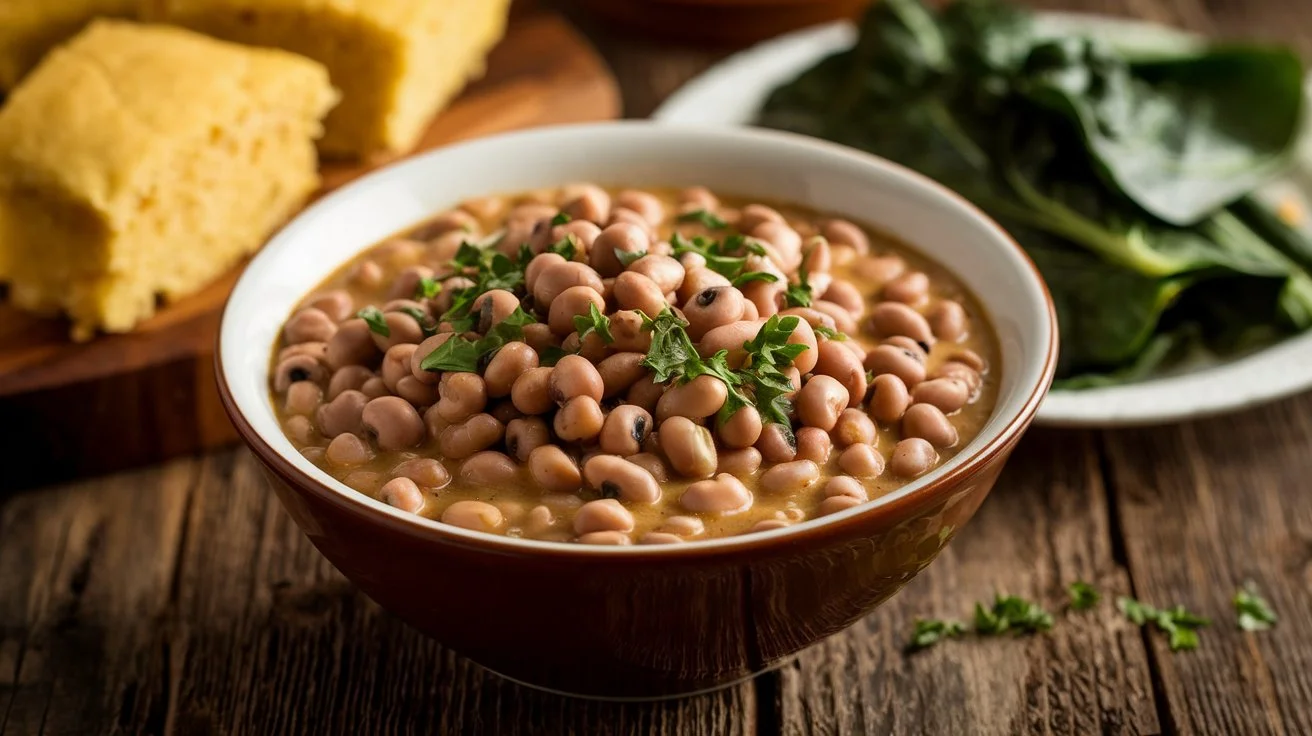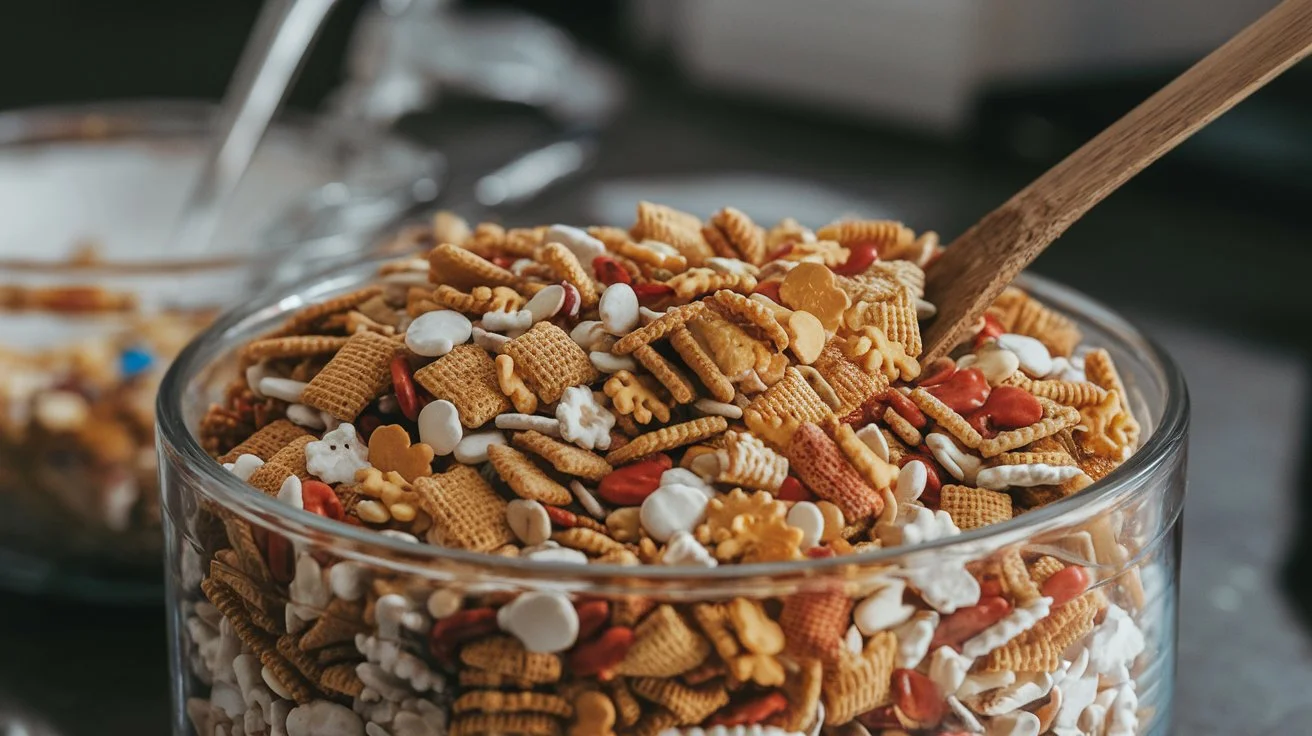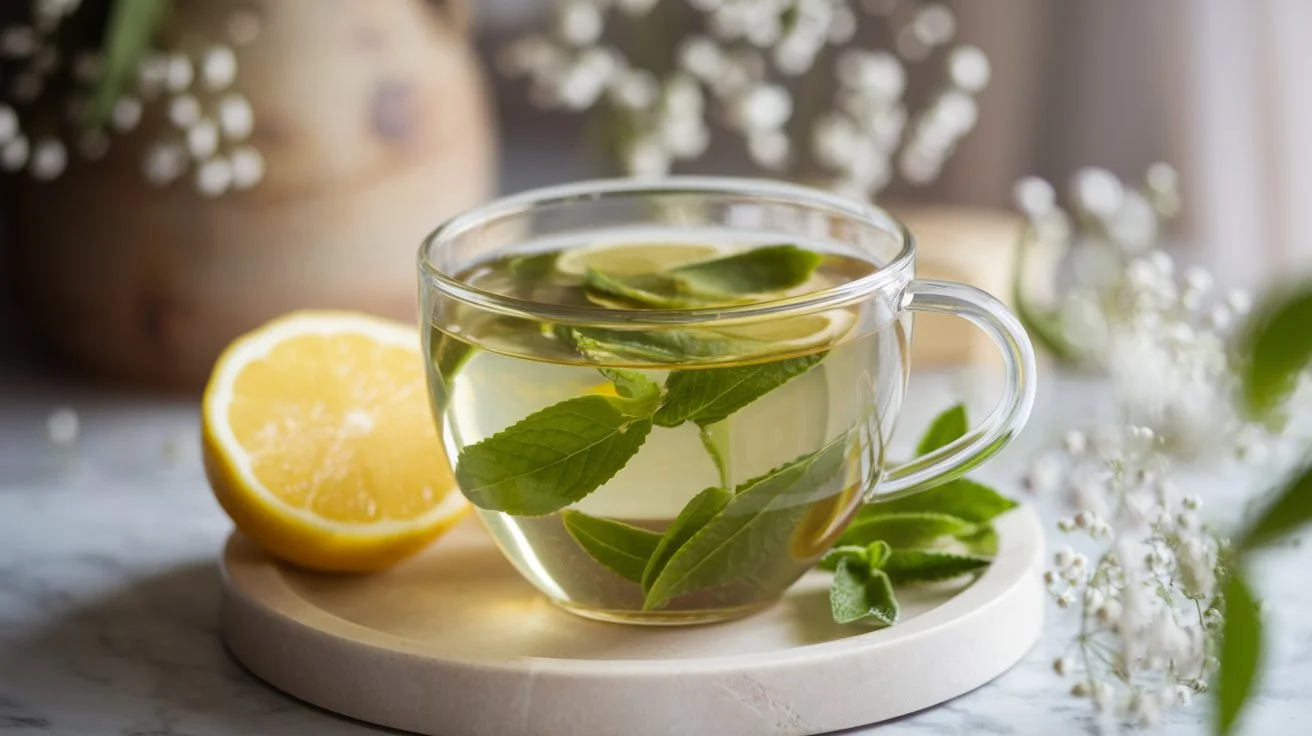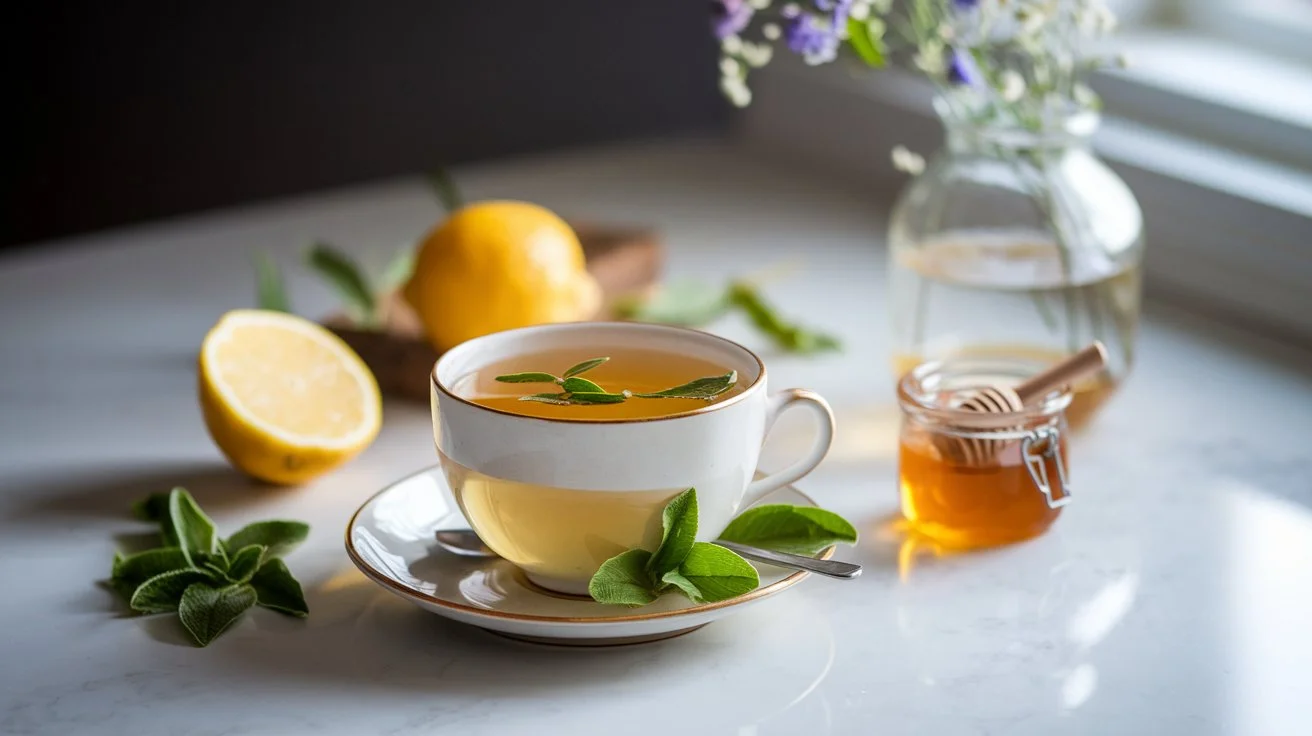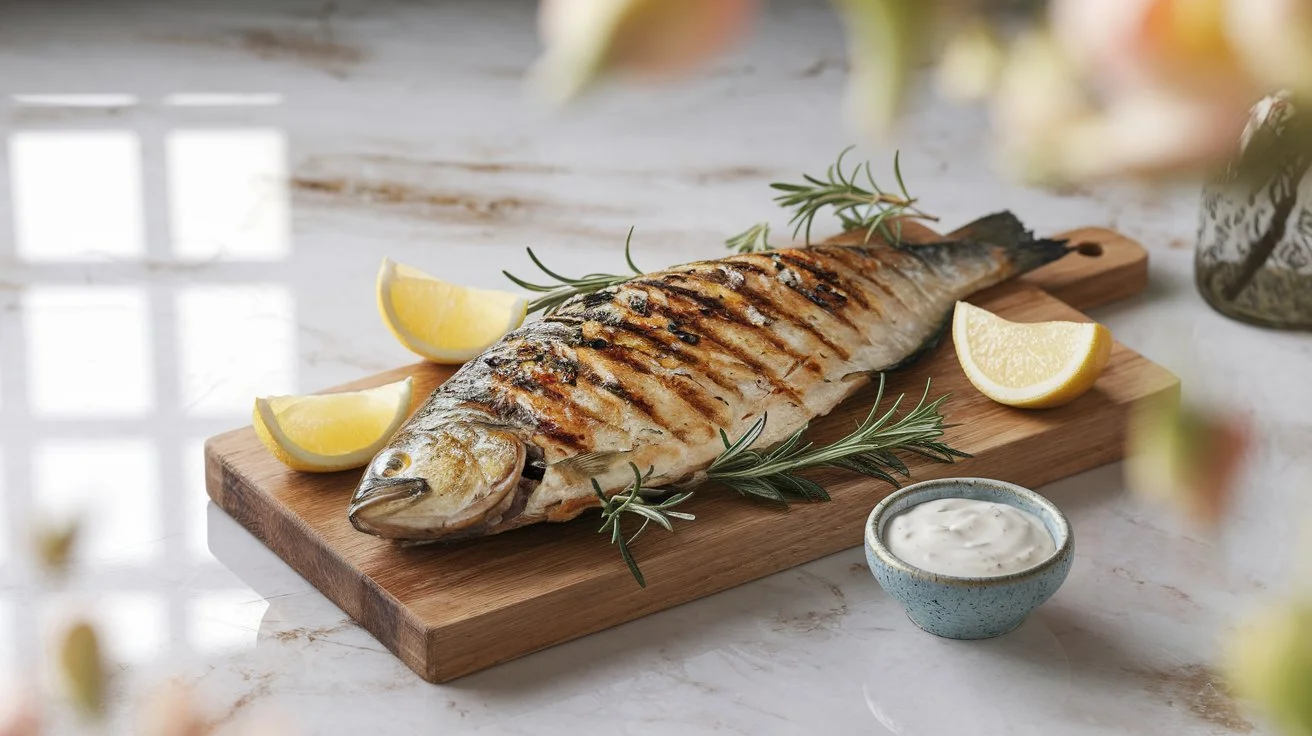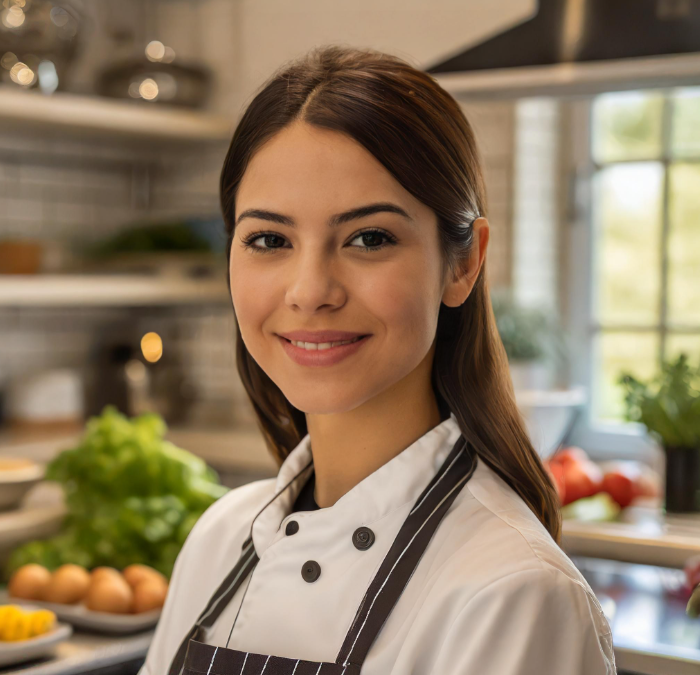Black-Eyed Peas Recipe: Delicious, Healthy, and Easy to Cook
Black-eyed peas are a staple in Southern cuisine, loved for their rich flavor, versatility, and health benefits. Whether you’re making a traditional New Year’s dish or simply craving a comforting meal, this black-eyed peas recipe is perfect for any occasion. In this guide, you’ll learn how to select, soak, and cook black-eyed peas, explore variations like Hoppin’ John, and discover the perfect accompaniments to serve alongside. Let’s dive into this classic Southern dish!
Introduction to Black-Eyed Peas Recipes
What Are Black-Eyed Peas?
Black-eyed peas, also known as cowpeas, are small, cream-colored legumes with a distinctive black spot. They originated in Africa and have since become a Southern delicacy, often prepared during celebrations like New Year’s Day for good luck and prosperity. Their slightly nutty taste makes them ideal for stews, soups, and salads.
Nutritional Benefits of Black-Eyed Peas
These humble legumes pack a powerful nutritional punch. They’re rich in fiber, protein, and iron, making them excellent for heart health and digestion. Just one cup provides nearly 13 grams of protein and ample vitamins like folate and magnesium. Including black-eyed peas in your diet can support overall wellness, balance blood sugar levels, and aid in muscle repair.
Cultural Significance of Black-Eyed Peas
Black-eyed peas hold deep roots in Southern cuisine, especially during New Year’s celebrations. They’re believed to bring good fortune and wealth when served with greens, symbolizing money. Traditionally, they star in dishes like Hoppin’ John, a classic blend of peas, rice, and spices, often served with cornbread for a comforting meal.
In the next section, you’ll discover how to properly prepare black-eyed peas, including essential soaking and cooking methods for the best results. Stay tuned!
Preparing Black Eyed Peas
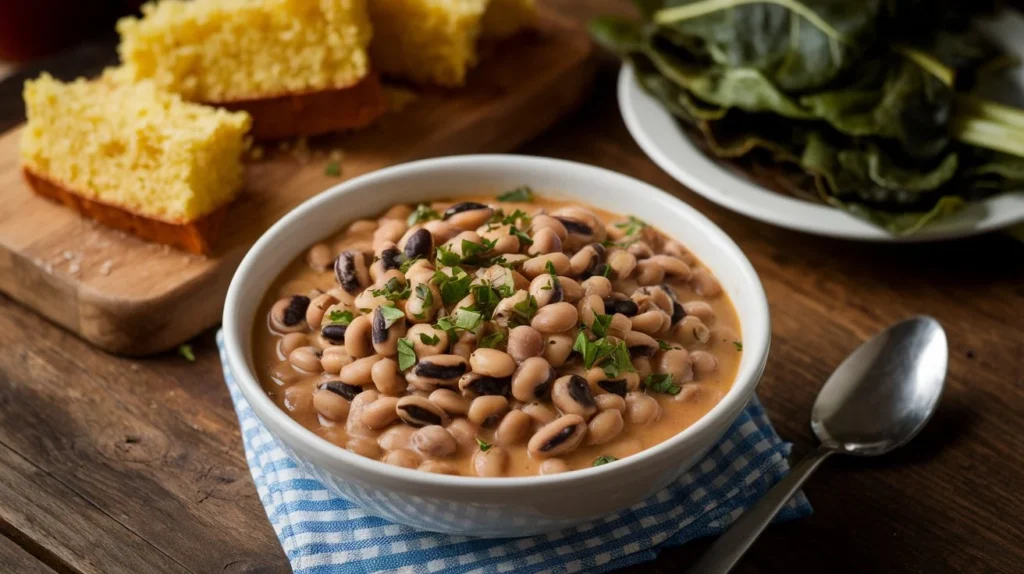
Before you dive into making a delicious black-eyed peas recipe, proper preparation is essential for the best flavor and texture. Whether you’re using dried peas or opting for a quicker canned version, understanding how to prepare them makes all the difference. Let’s break down the steps from selection to cooking.
Selecting Quality Peas
Choosing the right black-eyed peas ensures a more flavorful and nutrient-rich dish. You’ll often find them available in two main forms: dried and canned. Here’s how to choose the best quality for your recipe.
Dried vs. Canned Black Eyed Peas
- Dried Black-Eyed Peas: These are the traditional choice for a richer taste and firmer texture. They require soaking and a longer cooking process but deliver superior flavor. Always check for uniform size, no visible moisture, and minimal wrinkling.
- Canned Black-Eyed Peas: While convenient, canned peas often have added sodium and a softer texture. Rinse them thoroughly before use to reduce the salt content. They work well for salads and quick recipes but may lack the depth of flavor compared to dried peas.
Tips for Purchasing Quality Black Eyed Peas
- Opt for organic varieties when possible for a cleaner taste.
- Check expiration dates, especially with dried peas, as older legumes may take longer to cook.
- Avoid packages with broken or discolored peas.
Soaking Methods for Dried Black-Eyed Peas
Soaking dried black-eyed peas helps soften them, reduce cooking time, and improve digestibility by breaking down complex starches. Here are two effective soaking techniques:
Overnight Soaking (Traditional Method)
The most reliable way to prepare dried black-eyed peas is through overnight soaking:
- Rinse the peas under cold water to remove dirt and debris.
- Place the peas in a large bowl and cover them with about 3 inches of water.
- Allow them to soak for 8-12 hours or overnight.
- Drain and rinse thoroughly before cooking.
Tip: For a richer taste, add a pinch of salt to the soaking water.
Quick-Soak Technique (For Time Efficiency)
Pressed for time? The quick-soak method works well:
- Rinse the peas and place them in a large pot.
- Cover with water, ensuring there’s at least 2 inches above the peas.
- Bring the water to a boil and let it cook for 2 minutes.
- Remove the pot from heat, cover, and let it sit for 1 hour.
- Drain and rinse before cooking.
Quick-soaking is a handy shortcut but might slightly compromise the peas’ texture compared to the overnight method.
Cooking Techniques for Black Eyed Peas
Once your peas are soaked and ready, it’s time to cook! Each method provides a unique texture and flavor profile, so choose one that fits your cooking style.
Stovetop Method (Traditional and Flavorful)
The stovetop technique is perfect for capturing the rich, earthy taste of black-eyed peas.
- Rinse soaked peas and place them in a large pot.
- Cover with fresh water or broth (vegetable or chicken) – about 2 inches above the peas.
- Add seasoning (salt, pepper, garlic, onions) and optional aromatics like bay leaves.
- Bring to a boil, then reduce heat to a gentle simmer.
- Cook for 45-60 minutes, occasionally stirring.
- Check for tenderness; peas should be soft but not mushy.
Pro Tip: For extra depth, cook the peas with smoked turkey or a splash of apple cider vinegar near the end of cooking.
Slow Cooker Adaptation (Hands-Free Method)
The slow cooker is ideal for busy days when you want a black-eyed peas recipe that simmers gently while you work.
- Rinse soaked peas and place them in the slow cooker.
- Add 4 cups of broth or water per 1 cup of peas.
- Toss in seasonings like garlic, thyme, and onions for extra flavor.
- Set to low heat and cook for 6-8 hours (or high for 3-4 hours).
Tip: Avoid overcooking as peas can become too soft. Stir occasionally if possible.
Instant Pot Instructions (Fast and Effective)
The Instant Pot makes cooking black-eyed peas a breeze without compromising taste.
- Rinse and soak the peas (optional but recommended for better digestion).
- Add peas and 4 cups of broth or water to the Instant Pot.
- Seal the lid and set the pressure to “Manual” or “High” for 15 minutes.
- Allow natural pressure release for 10 minutes, then quick-release the remaining pressure.
Instant Pot cooking delivers tender peas faster while locking in nutrients and flavor.
By mastering these soaking and cooking techniques, you’ll create a perfectly tender and flavorful batch of black-eyed peas. Up next, we’ll explore a classic black-eyed peas recipe with step-by-step instructions!
Classic Black Eyed Peas Recipe
A classic black-eyed peas recipe is comforting, wholesome, and bursting with Southern flavors. This dish can be the star of your dinner table or serve as a delicious side for a larger meal. Below, you’ll find a detailed ingredient list, step-by-step instructions, and ways to enhance the flavor, whether you prefer a meaty or vegetarian version.
Ingredients List (Serves 6-8)
Here’s everything you need to make a perfect pot of black-eyed peas:
- 2 cups dried black-eyed peas, rinsed and soaked
- 6 cups vegetable or chicken broth (for richer flavor)
- 1 medium onion, chopped
- 3 cloves garlic, minced
- 1 teaspoon salt (adjust to taste)
- 1 teaspoon black pepper
- 1 teaspoon smoked paprika (for a deeper flavor)
- 1 teaspoon thyme (optional for an earthy note)
- 2 bay leaves (for aroma)
- 2 tablespoons olive oil
- 1 cup diced tomatoes (optional for a Southern twist)
- 1-2 smoked turkey wings or ham hocks (optional)
- 2 cups collard greens, chopped (for extra nutrition)
Step-by-Step Instructions
Follow these simple steps to create a hearty, flavorful batch of black-eyed peas.
Preparation Steps:
- Rinse the Peas: After soaking, drain and rinse the peas under cold water.
- Chop Ingredients: Dice the onion, mince the garlic, and prepare any optional greens or tomatoes.
Cooking Process:
- Sauté the Aromatics: Heat olive oil in a large pot over medium heat. Add chopped onions and garlic, cooking until softened (about 3-5 minutes).
- Add the Peas: Stir in the soaked black-eyed peas and mix with the onions and garlic.
- Pour in the Broth: Add 6 cups of broth, ensuring the peas are fully covered.
- Season the Dish: Add salt, black pepper, smoked paprika, thyme, and bay leaves. Stir well.
- Simmer Gently: Bring the mixture to a boil, then reduce to a low simmer. Cover and cook for 45-60 minutes or until the peas are tender but not mushy.
- Adjust Consistency: If the broth reduces too much, add a splash of water. If it’s too soupy, let it cook uncovered for 10 minutes to thicken.
- Taste and Adjust: Remove bay leaves, taste, and adjust the seasoning as needed.
- Add Greens (Optional): Stir in chopped collard greens during the last 10 minutes of cooking.
Serving Suggestions:
- Serve hot with cornbread, rice, or alongside collard greens for a true Southern feast.
- Garnish with a sprinkle of fresh parsley or green onions for added freshness.
Flavor Enhancements
The beauty of this black-eyed peas recipe lies in its versatility. You can stick with the classic version or explore these creative twists for added depth.
Adding Smoked Meats (Southern Style)
Smoked meats can elevate the savory richness of black-eyed peas, making them even more comforting.
- Smoked Turkey Wings: A healthier alternative to pork, infusing a deep, smoky taste.
- Ham Hocks: Traditional and packed with flavor but may require longer cooking.
- Andouille Sausage: For a spicier, Cajun twist.
Pro Tip: Add smoked meats at the start of cooking, allowing the flavors to infuse fully.
Vegetarian Alternatives (Healthy & Flavorful)
Skip the meat without sacrificing flavor!
- Smoked Paprika: Adds a rich, smoky flavor similar to meat.
- Liquid Smoke: Just a drop can mimic the smokiness of traditional meats.
- Mushrooms: Chopped mushrooms add a meaty texture and umami boost.
Bonus Tip: Use vegetable broth instead of chicken broth for a fully plant-based dish.
This classic black-eyed peas recipe is sure to become a favorite, whether you’re making it for a family dinner or a special celebration. Up next, we’ll explore popular variations and creative ways to serve this Southern gem!
Variations and Serving Suggestions
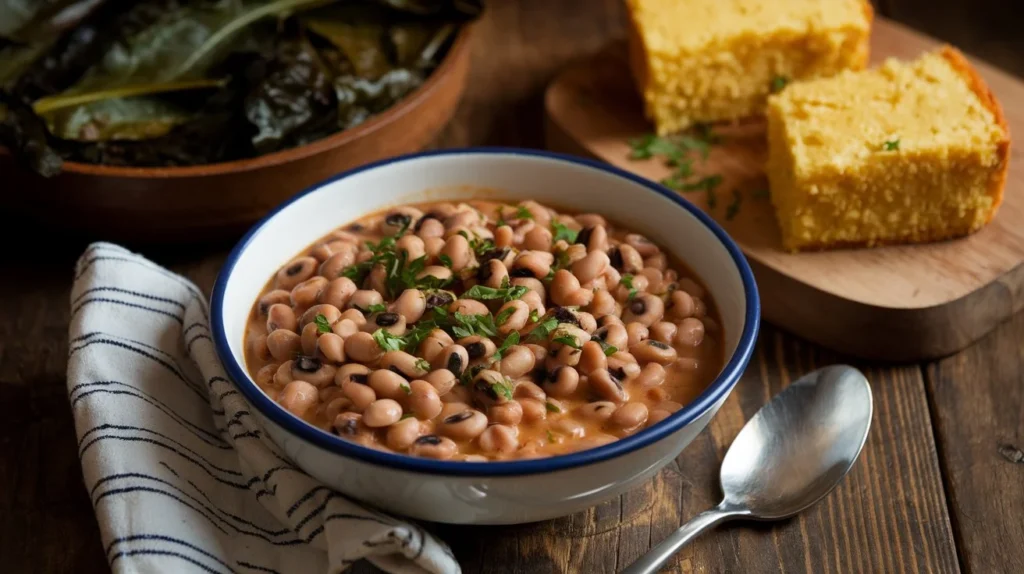
Black-eyed peas are incredibly versatile, making them ideal for various dishes beyond the classic stew. Whether you want to try traditional Southern recipes, lighter salads, or spicier options, these variations offer creative ways to enjoy this nutritious legume. Plus, we’ll share ideal side dishes to complement your black-eyed peas meal.
Hoppin’ John: A Southern Favorite
Hoppin’ John is a Southern classic deeply connected to the tradition of eating black-eyed peas on New Year’s Day for luck and prosperity. This dish combines black-eyed peas, rice, and savory spices, often served with greens and cornbread.
Quick Hoppin’ John Recipe:
- Ingredients:
- 2 cups cooked black-eyed peas
- 1 cup long-grain rice (cooked)
- 1 cup chicken or vegetable broth
- 1 small onion, chopped
- 1 bell pepper, diced
- 2 cloves garlic, minced
- 1 teaspoon smoked paprika
- Salt and pepper to taste
Instructions:
- Sauté the onions, garlic, and bell pepper in olive oil until softened.
- Stir in the cooked black-eyed peas and smoked paprika.
- Add the rice and broth, stirring gently to combine.
- Simmer for 10 minutes, allowing the flavors to blend.
- Serve hot with cornbread and collard greens for a complete meal.
Pro Tip: Add a dash of cayenne for extra heat or garnish with chopped green onions for a burst of freshness.
Black Eyed Peas Salad: Light and Refreshing
A black-eyed pea salad is perfect for warmer months or as a healthy side dish. This fresh take on the traditional legume balances earthy peas with vibrant veggies and a zesty dressing.
Ingredients for a Fresh Black Eyed Peas Salad:
- 2 cups cooked black-eyed peas
- 1 cup cherry tomatoes, halved
- 1 cucumber, diced
- 1 red onion, finely chopped
- 1 bell pepper, chopped
- 1/4 cup fresh parsley, chopped
Dressing:
- 3 tablespoons olive oil
- 2 tablespoons apple cider vinegar
- 1 teaspoon Dijon mustard
- Salt and pepper to taste
Instructions:
- Combine the black-eyed peas and vegetables in a large bowl.
- Whisk the dressing ingredients together until well blended.
- Pour the dressing over the salad and toss gently.
- Chill for 30 minutes before serving to allow flavors to meld.
Tip: Add crumbled feta or avocado slices for extra creaminess.
Spicy Black-Eyed Peas: Adding Heat to the Dish
For those who love bold flavors, spicy black-eyed peas offer a fiery twist on the traditional recipe. The heat can be adjusted to taste, making this dish as mild or spicy as you prefer.
Spices to Turn Up the Heat:
- Cayenne pepper
- Crushed red pepper flakes
- Jalapeños, sliced
- Chipotle powder
Spicy Variation Recipe:
- Follow the classic black-eyed peas recipe instructions but add cayenne and red pepper flakes while cooking.
- For a deeper smoky heat, stir in chipotle powder during the final 10 minutes.
- If using fresh jalapeños, sauté them with onions and garlic.
Serving Idea: Serve these spicy peas over rice or as a side for grilled chicken or roasted vegetables.
Serving Accompaniments: Perfect Pairings for Black Eyed Peas
Black-eyed peas shine when paired with classic Southern side dishes. Here are some perfect options:
- Cornbread: A Southern staple with a slightly sweet taste that balances the savory peas.
- Collard Greens: Adds a slightly bitter contrast and extra nutrition.
- Rice: Brown or white rice makes the dish more filling.
- Mashed Sweet Potatoes: Provides a creamy, slightly sweet counterbalance to the earthy peas.
Pro Tip: For a full Southern feast, serve black-eyed peas with multiple sides like fried okra, roasted carrots, or sautéed green beans.
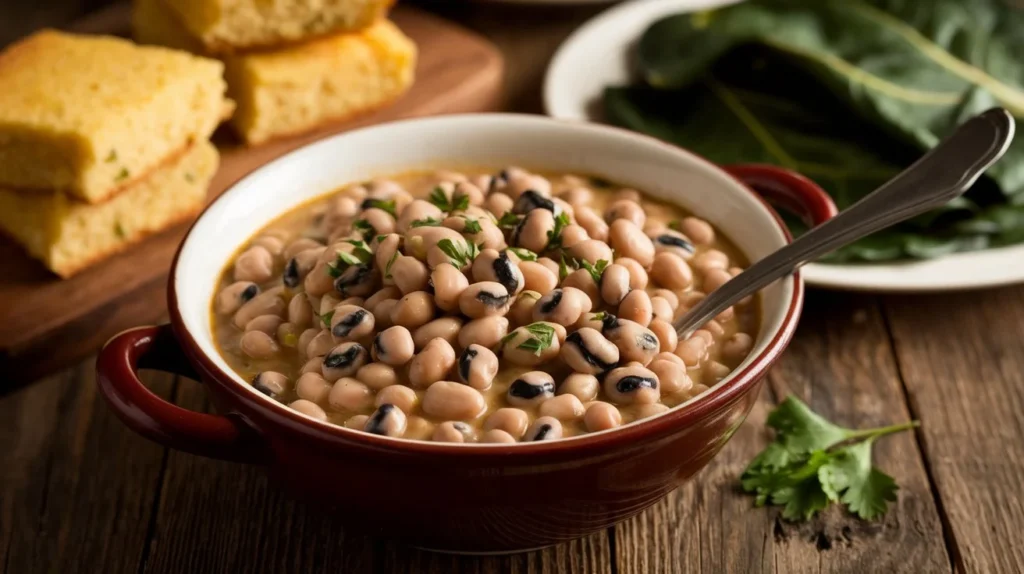
Frequently Asked Questions (FAQs)
What is the origin of eating black-eyed peas on New Year’s Day?
In Southern tradition, eating black-eyed peas on New Year’s Day is believed to bring good luck and prosperity. The peas symbolize coins, while greens represent paper money.
Can I use canned black-eyed peas instead of dried ones?
Yes! Canned black-eyed peas are convenient for quick meals. However, they can be softer and saltier than dried peas. Be sure to rinse them thoroughly before use.
How can I make black-eyed peas vegetarian-friendly?
To make a vegetarian black-eyed peas recipe, omit any meat products and use vegetable broth instead of chicken broth. Smoked paprika and mushrooms can add a smoky, umami depth to replace meat flavors.
What dishes pair well with black-eyed peas?
Popular accompaniments include:
*Rice
*Cornbread
*Collard greens
*Roasted vegetables
How should I store leftover black-eyed peas?
Allow black-eyed peas to cool completely, then store them in an airtight container in the refrigerator for up to four days. For longer storage, freeze for up to three months.
Do I need to soak black-eyed peas before cooking?
Soaking dried black-eyed peas reduces cooking time and improves texture. However, they can be cooked without soaking, though it may take longer.
Conclusion
Black-eyed peas are a true Southern classic, offering rich history, comforting flavors, and versatile serving options. Whether you prepare a hearty stew, a refreshing salad, or spicy black-eyed peas, these legumes bring both nourishment and cultural significance to your table.
By mastering the basics and exploring creative variations, you can enjoy this humble yet delicious ingredient all year round. Serve it with cornbread, collard greens, or rice for a complete, soul-warming meal that’s sure to please the entire family.

